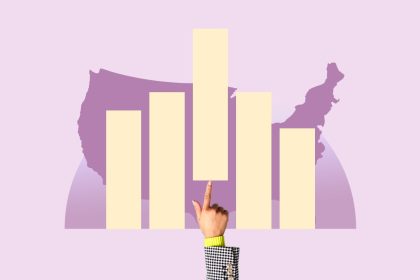Key takeaways
- Average business loan interest rates range from 7 percent to 99 percent depending on the type of loan and the lender
- SBA loans offer low-interest loans to many types of business owners, including startups and bad credit borrowers
- Factors that can affect interest rate include the Federal Reserve’s federal funds rate, your business’s characteristics, the type of lender, and whether you opt for a secured or unsecured loan
Interest rates for a business loan can vary considerably based on your business finances, industry and credit history. With good or excellent credit, you could see small business loan rates as low as 7 percent to 8 percent.
But interest rates can vary significantly based on your business’s financials, the lender and the type of loan you choose. Business lenders have a tendency to charge interest in different ways, making comparing interest rates confusing.
Knowing the average interest rates can give you a good starting point for choosing the right loan and lender.
Average business loan interest rates
According to the latest data from the Federal Reserve Bank of Kansas City, the average interest rate for urban small business term loans in Q3 2023 was 7.71 percent for fixed-rate loans and 8.98 percent for variable-rate loans.
But the federal funds rate has risen since 2023 — and actual loan rates tend to rise as well. So these averages are likely higher today.
These are typical starting business loan interest rates. But note that many lenders don’t disclose the upper end of their rate range — so the rate you’re offered will be significantly higher if you have poor credit.
| Business loan | Interest rate |
|---|---|
| Bank business loan | Average 7.71% to 8.98% APR* |
| Online business loan | 9.00% to 75.00% APR |
| Business lines of credit | Average 7.43% to 9.18% APR* |
| SBA loans | Fixed rate: 13.50% to 16.50% APRVariable rate: 11.50% to 15.00% APR |
| Merchant cash advance | 1.04 to 1.32 factor rate |
| Bad credit business loans | 20% to 99%+ APR1.03 to 1.52 factor rate |
Rates accurate as of March 2024; *Source for average rates: Kansas City Federal Reserve Bank
Bankrate tip
While lenders can charge a wide range of rates on conventional loans, the Small Business Administration sets maximum interest rates for SBA loans.
If you qualify, you’re guaranteed that the rate won’t go above the maximum rate. The max rates are set based on the type of SBA loan, loan amount and repayment term.
What is a business loan interest rate?
Interest is the cost of a business loan. It’s typically expressed as a percentage of the amount you borrowed that is added to your balance each year.
Usually, you’ll see business loan rates quoted as an annual percentage rate (APR). The APR for a loan reflects interest plus any fees or other charges you might have to pay, such as origination or underwriting fees.
That means the APR of a loan is usually higher than its interest rate, but it provides a more complete view of the cost of borrowing. If you know your loan amount, term and interest rate, you can use a business loan calculator to figure out your business loan’s cost.
However, business loans aren’t subject to the Truth in Lending Act, which requires lenders to show interest rates in a uniform way and include their loan fees. The result is that business lenders charge interest in a number of ways, including:
| Interest rate | A percentage of the amount you borrowed that is added to your balance each year. May compound on different schedules, such as annually or monthly. Some business loans may also offer simple interest, where interest is calculated based on the principal balance at the beginning of your loan term versus compounding over time. |
| Annual percentage rate (APR) | The cost of borrowing, including any interest charges (with compounding accounted for) and other loan fees. |
| Factor rate | The cost of borrowing expressed as a decimal. You multiply it by the principal at the beginning of the loan to get the total repayment cost. |
| Monthly or weekly rate | Lenders charge a percentage of the outstanding principal each week or month. This rate doesn’t factor in compounding interest or loan fees. |
| Flat fees | This cost is a flat dollar amount charged with the loan instead of interest, often offered by online lenders. Factor rates are an example of a flat fee. |
| Discount rates | The fee charged when getting funding for invoice factoring, often charged as a percentage of unpaid invoices. Some companies may increase the fee the longer the invoice goes unpaid. |
Bankrate insight
To compare interest costs between lenders charging interest in different ways, look at the total interest paid over the life of the loan, plus any fees. You may need to prequalify or submit an application with several lenders to do so.
What is a factor rate?
A factor rate is a multiplier that some lenders use to calculate the cost of a loan. Lenders use a decimal such as 1.10 or 1.50 in place of an interest rate or APR. Unfortunately, factor rates are often used for business loans to risky borrowers, such as short-term loans or merchant cash advances.
Bankrate insight
To calculate a loan’s cost with a factor rate, use this formula:
Principal loan amount x factor rate = cost of loan (excluding additional fees)
A business loan for $100,000 with a factor rate of 1.20 would have a total cost of $120,000 ($100,000 x 1.20 = $120,000).
Because the factor rate calculates the entire fee upfront, you may be on the hook to pay the entire fee even if you pay off the loan early. You could look for business lenders that offer a prepayment discount to save money.
Unfortunately, factor rates don’t give you an idea of the annual cost of borrowing or incorporate other business loan fees. This makes it difficult to compare the loan cost to loans with an APR since APR does represent the annual interest paid plus certain fees. To make sure you’re getting the most affordable loan, make sure you convert factor rates to interest rates.
Is a small business loan a variable or fixed rate?
Small business loans can come with both variable and fixed interest rates. It depends on the type of loan that you choose.
A variable interest rate is one that can change throughout the life of the loan. They’re typically based on an interest rate benchmark and move along with the benchmark. Your loan can get cheaper if rates fall but also get more expensive if they rise.
Fixed-rate loans have a single, fixed interest rate that doesn’t change. These offer predictability in your monthly payments.
Term loans, equipment loans, and other lump sum loans have fixed rates more often than not. Things like lines of credit, credit cards and merchant cash advances are more likely to have variable interest rates.
Bankrate insight
The average credit card interest rate is currently 21.47 percent in Q4 of 2023, according to the Federal Reserve. Depending on your personal credit score, the best business credit cards typically offer variable interest rates ranging from 18.5 percent to 28 percent.
Factors that can affect business loan interest rates
Many factors influence business loan rates — some that borrowers can influence and others that they can’t.
Federal funds rate
Business owners can’t control market and economic conditions. The Federal Reserve sets the federal funds rate, a benchmark interest rate, based on the economy. It tends to raise rates when the economy is overheating or inflation is high and drop them when recession looms.
Because the federal funds rate can be a benchmark for other loans, the rates you’ll pay for new business loans can change as the Fed funds rate changes. If you choose a variable interest rate, your rate will change with market conditions over your loan’s life; with a fixed rate, it remains the same.
Your business’s characteristics
Lenders look at a few aspects of your business to predict how risky lending to you might be.
Some characteristics they examine include:
- Age: The older your business is, the less risky it will appear to lenders. According to the 2023 Small Business Credit Survey (SBCS), 66 percent of employer businesses that were fully approved for loans had over 20 years in business. Just 40 percent were approved with five years or less in business.
- Revenue: Companies with more revenue and better cash flow can secure lower rates. According to SBCS, 50 percent of applicants with $100,000 to $1 million in annual revenue were fully approved versus 31 percent with less.
- Industry: Some industries, like food service, have higher failure rates, which may cause lenders to charge higher rates or partially approve funding. Based on the SBCS, the industry with a 63 percent approval rate is manufacturing, whereas the hospitality industry is less likely to be fully approved.
- Business plan: Having a solid business plan that shows how you’ll use the loan to grow and how you’ll repay the debt can help convince some lenders to offer better rates.
- Credit score: It’s possible to get a business loan with a personal credit score of 500. But the higher your credit score, the easier it will be to secure a lower rate.
- Personal financial details: Many lenders will look at your personal credit score and finances, especially if your business is young. Having strong personal credit and finances can help secure lower rates.
The lender type
Different types of lenders offer different types of loans and have different interest rates. Applying for a business loan with the wrong lender could end up costing you more or lead to your application being denied.
Traditional lenders, like banks and credit unions, offer a variety of loan types, and their rates can vary significantly. It’s worth checking with your bank to see if they offer a good deal to borrowers with current business bank accounts.
Online and other alternative lenders often focus on a specific type of loan and a specific type of borrower. You can find great rates from online lenders focusing on companies with great credit. If you choose a lender focusing on young companies or those with bad credit, rates may be very high.
SBA loans are backed by the federal government and administered through both traditional and online lenders. These loans may be easier to qualify for if you don’t have great credit and want reasonable interest rates. But they come with a lot of bureaucracy and paperwork. Don’t expect a quick approval if you opt for an SBA loan.
Bankrate insight
There are many types of SBA loans, including:
The right one for you will depend on factors like your credit score, annual revenue and how you intend to use the funds.
Collateral
Some business lenders let you select between a secured or unsecured loan. A secured loan is backed by collateral — an asset such as inventory or property — that the lender can seize if you default on your loan.
Secured loans reduce the lender’s risk, leading to lower interest rates. Unsecured loans have higher rates but don’t require collateral.
How to get the best business loan interest rate
The number one thing you can do to secure the best business loan rates is to make sure your business looks like a low-risk borrower to lenders. That means high revenue, strong cash flow and a good credit history.
Another way to appear low-risk is by improving your credit score. Both your personal and business credit can matter. Personal credit is especially important if you’re running a startup or a smaller business. Always pay your bills on time and keep your debts low relative to your income to strengthen your credit.
But those steps won’t be enough on their own. Interest rates on business loans can vary by lender. You’ll need to shop around and compare offers from multiple lenders to find the best deal. Many lenders offer online prequalification tools and other ways to get quotes with just a soft credit pull (which doesn’t impact your credit score).
Even if you’re shopping for a bad credit business loan, it’s worth comparing lenders to try to save some money.
Once you have several quotes, compare them to find the most favorable rate and terms that work for you. You can try negotiating with each lender to secure an even lower rate or simply select the one with the lowest APR.
Another option for lowering rates is to choose a secured loan over an unsecured loan.
What’s a good business loan interest rate?
A good interest rate on a business loan will be the lowest interest rate that you qualify for based on your credit profile. Ideally, you would qualify for the lowest interest rates the lender offers.
Banks and some online lenders start interest rates around 6 percent to 8 percent. But if you have weak revenue or a poor credit profile, you might only qualify for interest rates of 20 percent to 99 percent.
Either way, you want to compare loan offers from multiple lenders to find the best business loan interest rates available to you.
The bottom line
Lenders take a variety of factors into account when setting small business loan rates, especially your business’s credit history, time in business and revenue. Knowing the average interest rates can guide you in choosing the best business loan, though your rate may look different based on your creditworthiness.
Make sure to shop around to compare loan offers, consider using collateral to secure a lower interest rate, and take steps to improve your credit score to get the best deal. With the right loan, businesses can finance expensive purchases, invest in growth, and manage their cash flow in a cost-effective way.
Frequently asked questions
-
Low interest rates are possible for business loans, but it depends on your business’s — and in many cases personal — credit history. The lowest interest rates of around 6 percent go to borrowers with high revenue and strong credit such as a credit score of 670+, among other factors.
-
The most ideal interest rates for a business loan fall between 7 percent and 16 percent. Yet 20 percent to 30 percent could be considered good for a bad credit business loan. When it comes to paying interest on a loan, the lowest rate you can find for your credit profile is a good rate.
-
The SBA sets maximum rates using a base rate plus another rate specified by the SBA, such as prime + 4.25%. Fixed-rate loans use the prime rate as its base, which is a market rate published by the Wall Street Journal. Variable-rate loans are based on the prime rate, LIBOR interest rate index or the peg rate, which is an optional set of rates published by the SBA.
Read the full article here

















